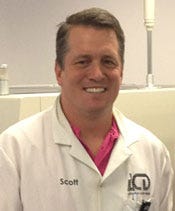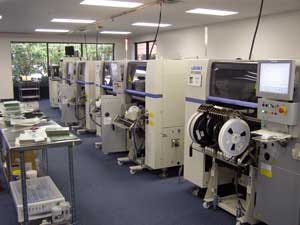Popping the Bubble on Today's Package-on-Package Concerns
October 9, 2013
|
W. Scott Fillebrown, President and CEO of ACD |
Package-on-package (PoP) assembly is a quickly evolving 3D packaging trend (or, to be more politically correct, "technique") that meets today's demand for lighter, faster and miniaturized electronics, especially in the medical device field. PoP involves stacking one peripheral array BGA package on another full, peripheral or custom array BGA package.
Sounds good, right?
Right...except that there are some issues. One of largest of these is that the final assembly yield is affected by package warpage. The widely adopted process for PoP assembly is single pass reflow of the top and bottom packages after being assembled on the PCB. The solder balls of the top package are dipped in flux or solder paste before being placed on the top of the bottom BGA package during assembly. The flux or paste dip, unlike solder paste print, is unable to accommodate for the solder ball co-planarity issues and package warpage between the top and bottom packages, thereby making PoP assembly challenging, especially in the manufacture of medical devices.
ACD (Richardson, TX) specializes in package-on-package assembly. ACD has the capability to place, test, profile and rework PoP assemblies, effectively removing this concern from manufacturers' minds. Seems too good to be true, but it is both true and realistic. How? Quite simply through the purchase and unique combination of advanced technology systems.
|
ACD operates two lines from Juki Automation Systems. |
ACD has two lines from Juki Automation Systems, each consisting of two chip shooters and one flexible placer with PoP capability. This flexibility allows ACD to process complex builds like PoPs back-to-back with very little down time. Additionally, during functional testing, operators verify that each of the various product capabilities defined in the design or test specification meet customer requirements. This is instrumental in providing customers with quality, defect-free PoP assemblies. Finally, ACD uses PDR's SMT/BGA rework system, which is designed specifically to cope with the challenges of repairing today's PCB assemblies using focused IR technology. The system provides ACD with 100 percent yield BGA rework without any complications. It also provides extremely high levels of profiling and process controls for the effective rework of the most advanced packages, including PoP assemblies.
ACD's assembly business model is geared toward supporting high-mix, high-technology assembly from prototypes through low-to-mid volume production. We stay up to date on the latest trends in order to help our customers succeed. We will exhibit in Booth #2040 at the upcoming Medical Design & Manufacturing (MD&M) Minneapolis Exposition, scheduled to take place October 29-30, 2013 at the Minneapolis Convention Center. At our booth, we can provide detailed information on PoP assemblies and why they are so popular in the medical devices industry.
W. Scott Fillebrown, President & CEO of ACD, became a stockholder in January 1995. Starting with ACD after college, he has a total tenure of more than 20 years with the company. Currently, he is responsible for the company's finance, manufacturing operations and marketing efforts. His email is [email protected].
About the Author(s)
You May Also Like



.png?width=300&auto=webp&quality=80&disable=upscale)
